#weimar germany
Text
You can just go on youtube and watch the full version of The Cabinet of Dr. Caligari (1920) whenever you want
107 notes
·
View notes
Text
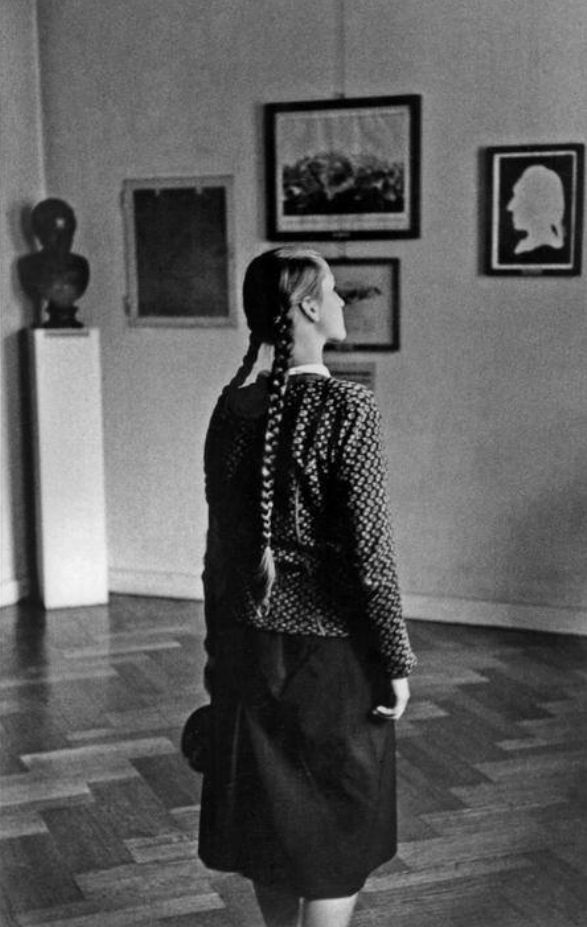
Rene Burri, House of the German poet Johann Wolfgang von Goethe, Weimar Germany, 1957
165 notes
·
View notes
Text
Weimar Germany is my Roman Empire
#weimar republic#I know it was extremely flawed and chaotic#but god it was so ahead in queer culture and they had begun a burgeoning Afro German community thanks to jazz#and it was succeeded with that bloody dragon#weimar germany
72 notes
·
View notes
Text

"Milieu: Gay Berlin" - an exploration of LGBT+ identities in the Weimar Republic (1920's Germany).
Based on "Gay Berlin" by Robert Beachy.
Did you know the roaring 20s have *always* been queer, both 100 years ago and now?
-----------
Note: I didn't have enough space to cover Dr. Magnus Hirschfield properly but he will be the subject of my next infographic. Dr. Hirschfield was a gay Jewish doctor and activist who created the first medical institute (Institut für Sexualwissenschaft) for LGBT+ people. He pioneered transgender care!
#LGBT+#lgbt history#lgbtq books#lgbtq history#weimar republic#weimar germany#1920s#roaring 20s#queer history#trans history#gay history#lesbian history#bi history#weimarer republik#history#infographic#gay berlin#berlin germany#berlin
193 notes
·
View notes
Photo

Fascinating cover of Berliner Leben, Issue 24, 1921
180 notes
·
View notes
Text
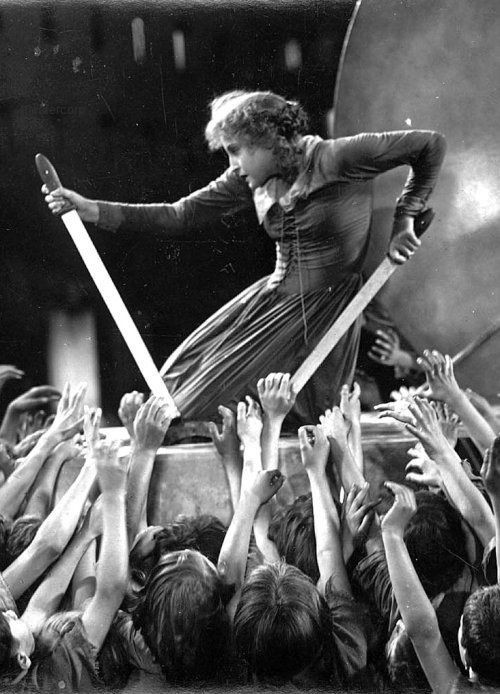



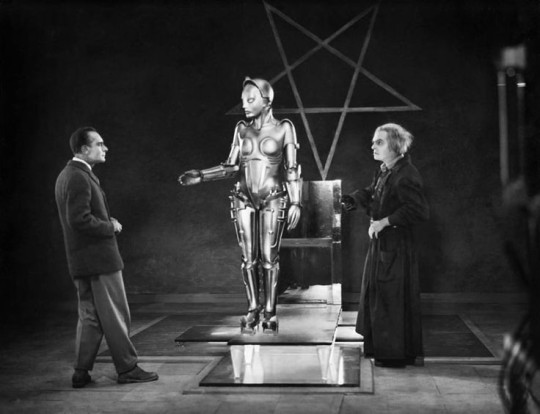

Saw the complete cut of metropolis with live symphony tonight and it was BRILLIANT!!! MARVELOUS!!! a very not overrated piece of media ... It is in fact that good !!!!!! and not just cause it's beautiful. It is beautiful but the writing .. pacing.. acting ..THE MUSIC!!! it all fucks tremendously !!!! Also thre are a lot of overarching vibes that are kind of gay with it
#vintage photography#metropolis#metropolis 1927#fritz lang#silent film#vintage fashion#vintage photo#1920s#vintage style#weimar republic#German expressionism#weimar germany#science fiction
28 notes
·
View notes
Text
Some stuff about queer culture in Weimar Berlin
Note: Das Institut für Sexualwissenschaft does not have a definitively used translation from what I see -- have seen Institute of Sexology (my preferred translation), Sexual Science, Sexual Research, Sexual Knowledge etc. It’s all the same place.
any further suggestions, feel very welcome to add!
*
ONLINE:
the wikipedia for the institute: yeah, yeah it’s wikipedia, but get some groundwork done here if you know nothing at all, so the next set of recommendations don’t overwhelm you
Remembering Dora Richter, One of the First Women to receive Gender-Affirming Surgery: good introduction to the Institute of Sexology, with a focus on one of the women who lived, worked, and received care there
On the Clinics and Bars of Weimar Berlin: a more in-depth article about the institute, some of the people who sought to get support via it, and the surrounding culture of the time
The Magnus Hirschfeld Society: a lot of their work is published online, in German, French, and English. Hours of fun.
Interview with the author Laurie Marhoefer: discussing his book (mentioned below) Sex and the Weimar Republic, which focuses on various fronts to sexual liberation in the Weimar Republic, including the limitations of assimilationist approaches*
*Marhoefer is currently working on their third book centred on queer persecution during the Third Reich, which “centrally analyzes racism as a vector of persecution,” so that’s something to keep an eye out for too
The Asian Canadian gay activist whose theories on sexuality were decades ahead of their time: an article about Li Shiu Tong, by Marhoefer, who also wrote a book about him (see below). The title really says it all
The Transvestite Magazine of Weimar Berlin: a series of magazines that were published until 1933 when the crackdown on queer rights resulted in the destruction of the Institute of Sexology, featuring examples of voices almost completely overlooked -- transvestites who were simply living their lives
The Institute for Sexualwissenschaft: this blog post goes into something I’ve been thinking as well -- the parallels between the anti-queer/anti-trans violence perpetuated by the German government before, during, and after the Nazis and the anti-queer/anti-trans rhetoric and violence today. Where would we be if all that research had survived? (and luckily, some of it has!)
*
BOOKS
Der Liebe und Dem Leid: Das Institut für Sexualwissenschaft 1919-1933: a recent German historical account of the institute of Sexology that I desperately want to get my hands on
Sex and the Weimar Republic: German Homosexual Emancipation and the Rise of the Nazis: explores intersectional fights for queer emancipation during the Weimar Republic and its limitations
Racism and the Making of Gay Rights: A Sexologist, His Student, and the Empire of Queer Love: goes deeper into the story of Li Shiu Tong, who was an impressive researcher at the institute and whose contribution to sexual and gender philosophies is being reconsidered at the moment!
Magnus Hirschfeld: The Origins of the Gay Liberation Movement: a biography of Magnus Hirschfeld and his central role in the queer liberation movement of the time
The Masculine Woman in Weimar Germany: looks at the depictions of women who didn’t conform to standard gendered and sexual expectations from 1918-1933 and explores their role to understand gendered lives and experiences at this point in German history
The Hirschfeld Archives: Violence, Death, and Modern Queer Culture: a book I desperately want to read on anti-queer violence in the early 20th century, focusing on the Institute of Sexology and its destruction, which has gathered archival material from “over a hundred published and unpublished books, articles, films and photographs.”
Gay Berlin: Birthplace of a Modern Identity: another broader book about Berlin. I’m interested in the subtitle “birthplace of a modern identity” as potentially exploring the ways Berlin was the centre of explorations that despite the Nazis best efforts are still alive and -- with setbacks -- remembered today
Queer Identities and Politics in Germany: A History, 1880-1945: Idk what to tellya it’s about queer identities and politics in Germany between 1880-1945
*
ISHERWOOD
British author Christopher Isherwood spent some time in Berlin, notably including a stay at the Institute of Sexology. This time resulted in “The Berlin Stories,” as well as a section in “Christopher and his Kind” (his autobiography).
These stories were turned into the play+film “I Am A Camera” and the musical+movie “Cabaret”
The 1993 Alan Cumming and Jane Horrocks Cabaret (one of my favourite things in the world)
Opening of the 1972 movie
(according to a 1977 biography of Isherwood, he denounced the Berlin Stories in a 1956 essay: “He regretted depicting many persons as "monsters" and noted they were "ordinary human beings prosaically engaged in getting their living through illegal methods. The only genuine monster was the young foreigner who passed gaily through these scenes of desolation, misinterpreting them to suit his childish fantasy."” -- that being said, the people in those books are still very, very interesting and -- despite Isherwood’s initial limitations/biases -- beautiful in their realities)
*
OTHER MOVIES
Anders als die Andern and Laws of Love -- two movies produced via the institute exploring same-sex relationship rights. I haven’t seen the latter yet (it was only restored in 2021, nearly a hundred years after it was released), but it was heavily censored. The former (with the famous German actor Conrad Veidt as a lead) is considered the first movie to overtly show homosexuality. They’re both on the Internet Archive
The Einstein of Sex: Life and Work of Dr. M. Hirschfeld: by cult film-maker Rosa von Praunheim that explores the opening of the institute up until the 30s. I haven’t seen it yet, but very excited! EDIT: currently watching and it’s definitely On A Budget, but a good rundown of Hirschfeld’s life. On youtube with english subs. EDIT 2: having finished it, am interested in how it portrayed Dora Richter (that it had her in it at all was great) -- not completely accurate, but a labour of love
Paragraph 175: a 2000 movie documenting some of the gay men who experienced the violence of the law under Nazi regime and afterwards. This film is simply made, and there aren’t many men featured in it -- it feels like it’s trying to get the story told before they lost their chance completely. The stories are very brutal. It starts pre-war. One of the men talking is the French author Pierre Seel, who lived until 2005 and received recognition as a holocaust survivor in 2003, in part due to this film and his own memoir
Great Freedom: this actually takes place post-war, but another insight into what Paragraph 175 was. the main character was in a concentration camp, but it’s not depicted. I simply think it’s good, although it’s mildly off-topic.
*
MISC
this has focused a lot on the Institute of Sexology, but I’d like to read some works on Helene Stöcker and the World League for Sexual Reform
#resources#queer stuff#queer resources#weimar berlin#magnus hirschfeld#li shiu tong#laurie marhoefer#heike bauer#paragraph 175#die institut für sexualwissenschaft#weimar germany#cabaret#christopher isherwood#queer history#queer germany#germany#queer literature#queer non-fiction#queer cinema
164 notes
·
View notes
Text
Publications like Die Freundin (The Girlfriend); Frauenliebe (Women Love, which later became Garçonne); and Das 3. Geschlecht (The Third Sex, which included writers who might identify as transgender today), found dedicated audiences who read their takes on culture and nightlife as well as the social and political issues of the day. The relaxed censorship rules under the Weimar Republic enabled gay women writers to establish themselves professionally while also giving them an opportunity to legitimize an identity that only a few years later would be under threat.
[...]
There were some twenty-five to thirty queer publications in Berlin between 1919 and 1933, most of which published around eight pages of articles on a bi-weekly basis. Of these, at least six were specifically oriented toward lesbians. What made them unique is the space they made for queer women, who had traditionally been marginalized on account of both gender and sexuality, to grapple with their role in a rapidly changing society. (The concept of the “new,” albeit straight, woman in the Weimar Republic has been researched broadly, including by Rüdiger Graf in Central European History, who writes that it reflected a crisis of masculinity following defeat in the First World War as well fears over the country’s future when women were putting off getting married and having children.)
In these interwar years in Germany, queer and transgender identity became more accepted, in large part thanks to the work of Magnus Hirschfeld, a Jewish doctor whose Institut für Sexualwissenschaft focused on issues of gender, sex, and sexuality. At the same time, women in Germany were making strides toward greater independence and equity; they gained the right to vote in 1918, and feminist organizations like Bund Deutscher Frauenvereine cultivated space for women in public spheres, encouraging their advancement in politics. As Sara Ann Sewell writes in the journal Central European History, the German Communist Party created the Red Women and Girls’ League in 1925 to attract more women and working-class people, particularly through organizing factory workers.
More generally, German women were becoming increasingly empowered. Queer people—including women—rallied around the abolishment of contemporary sodomy laws. This struggle “created a wider climate of publication, activism, and social organization that was much more embracing of different types of queer and trans lives,” according to Katie Sutton, an associate professor of German and gender studies at the Australian National University.
33 notes
·
View notes
Photo

VOLKER BRUCH
2022 • Babylon Berlin • S4·E08 • Weimar Republic
#has he yet distanced himself from that covid denier vid like loads of his costars have?#german actors saw that celeb 'imagine' sing-along catastrophe & said hold me lager#the neonazi afd ofc loved it and spread it far & wide#babylon berlin#the german public woz ofc not having it and decisively rejected the misinformation attempt#perioddramaedit#volker bruch#gereon rath#period drama#weimar germany#1920s#gorgeous#beautiful#male beauty#beautiful men#men in bed
34 notes
·
View notes
Text
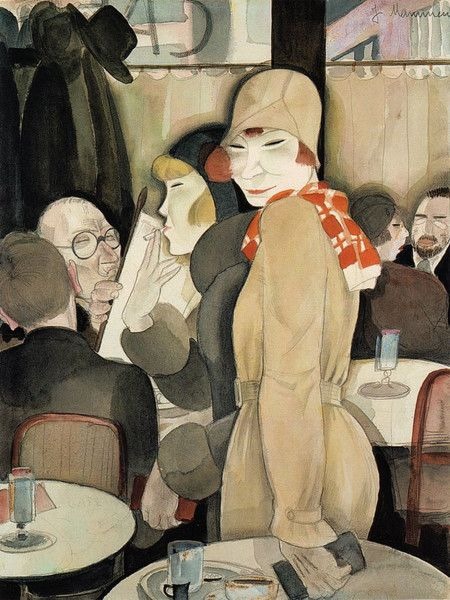
Jeanne Mammen
Romanisches Café
1930
#jeanne mammen#modern art#weimar germany#weimar era#weimar art#weimar#german art#german painter#art history#women painters#women in art#cafe scene#cafe#cafe aesthetic#1930s art#1930s style#1930s fashion#1930s painting
27 notes
·
View notes
Text

Photograph by Else Neuländer Simon, also known as Yva, circa 1920s, Berlin.
Born in 1900 in Berlin, Else worked her magic through fashion and advertising photography as well as owning a popular studio. She had a keen eye for the sensual interplay of light and shadow and used lines and curves to dramatically display the women she photographed.
Frequently, she said more about a subject by deliberately avoiding the model's face. Many photos focused on, or depicted solely, a woman's legs, and they were sexy and sophisticated works that endure through today. The importance of her art and her role are reflected in the fact that she taught Helmut Newton, who went on to become one of history's most famous photographers.
#mygirlhatesmyheroin#vintage#black and white photography#1920s#20s#else neulander simon#yva#jazz age#roaring twenties#flapper#fashion photography#retro#antique#20s fashion#berlin#weimar era#weimar germany#weimar republic#helmut newton
38 notes
·
View notes
Text
man? woman? my gender are the degenerate queer cabarets and clubs of Weimar Berlin
#degenerate in heavy quotation marks ofc i love them <3#queer history#lgbt history#weimar germany#berlin#queer#transgender history#transgender#wills mumbles
14 notes
·
View notes
Photo
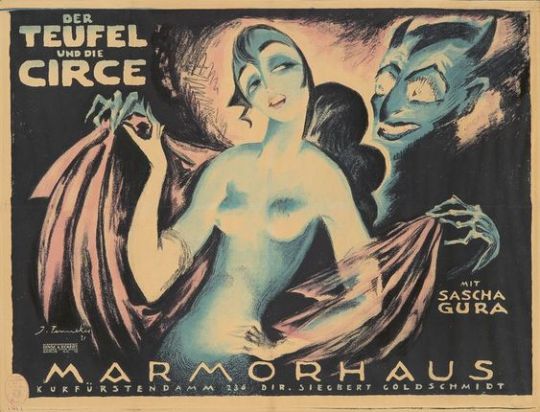



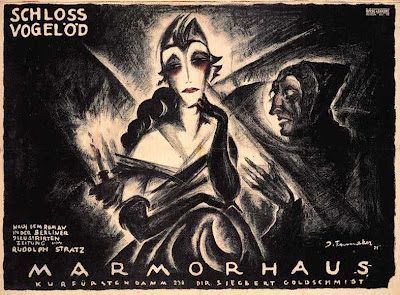

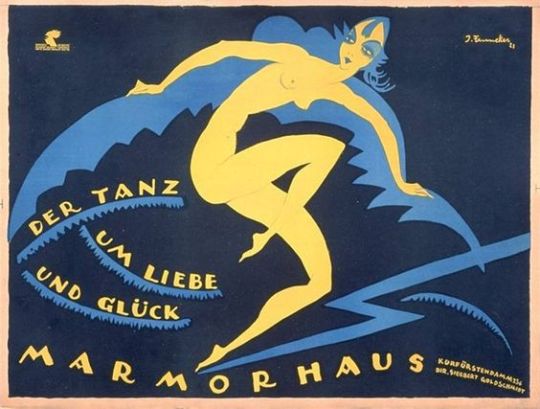


josef fenneker’s posters for the marmorhaus theater
61 notes
·
View notes
Text
I am wasting time at work again but I must share what I found on Twitter - photos of this proto-punk gay gang from Weimar Germany who called themselves The Wild Ones:
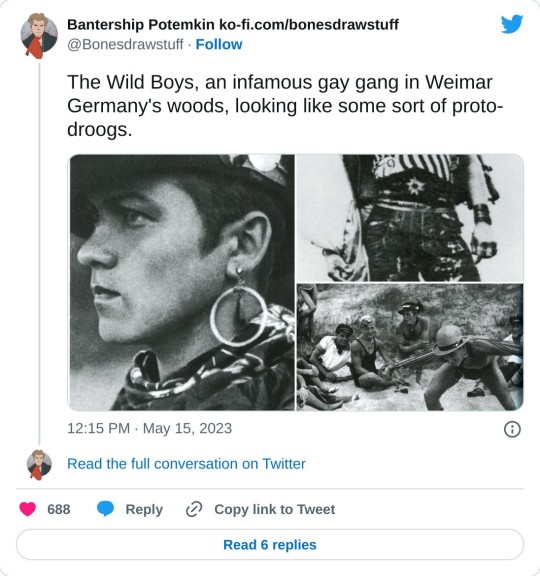
Edit: I must add this link too:
The article describing them!
40 notes
·
View notes
Text
"Yet simply steering clear of prostitutes and lower-class establishments was not enough to satisfy the requirements of transvestite respectability; one also had to conform to dominant standards of dress and self-presentation:
"When we demand that the public acknowledge us, then we have the duty to dress and conduct ourselves publicly in an inconspicuous manner. ... At home each person can do as they choose and as they consider right, but in public they must conform"
There were, of course, important practical reasons for such a judgmental approach for successful "passing" represented an effective means of protection against physical and verbal harassment or arrest, as the following commentator acknowledged: This required both passing the test of gender authenticity, and meeting the demands of contemporary, unadorned bourgeois fashion: "The simplest dress is, in our case, often the most elegant." Middle-class transvestite commentators bluntly rejected any clothing or accessories they considered excessively opulent, gaudy, or dated, such as corsets, costume rings, or oversized earrings, even as such fashions continued to be favored by female impersonators and entertainers. Such attitudes amounted to a policing of one's cross-dressing peers based on the ability to "pass" in public as a respectable middle-class lady (female-to-male transvestites, on the other hand, were generally considered able to fly under the radar of the 'masculinized' female fashion so prominent in mid-1920s)."
"As hard as it is for us to suppress our instinct, I nonetheless advise all transvestites to only allow themselves to be seen in the clothing of the other sex when they are utterly certain that they will come into conflict with neither the police nor the broader public".
What I consider to be the origins of 'passing', from an excerpt of a study of middle class transvestites in Weimar Germany by Katie Sutton.
"'We Too Deserve a Place in the Sun': The Politics of Transvestite Identity in Weimar Germany" Katie Sutton, German Studies Review, Vol. 35, No. 2 (May 2012), pp. 335-354 https://www.jstor.org/stable/23269669 .
26 notes
·
View notes
Text
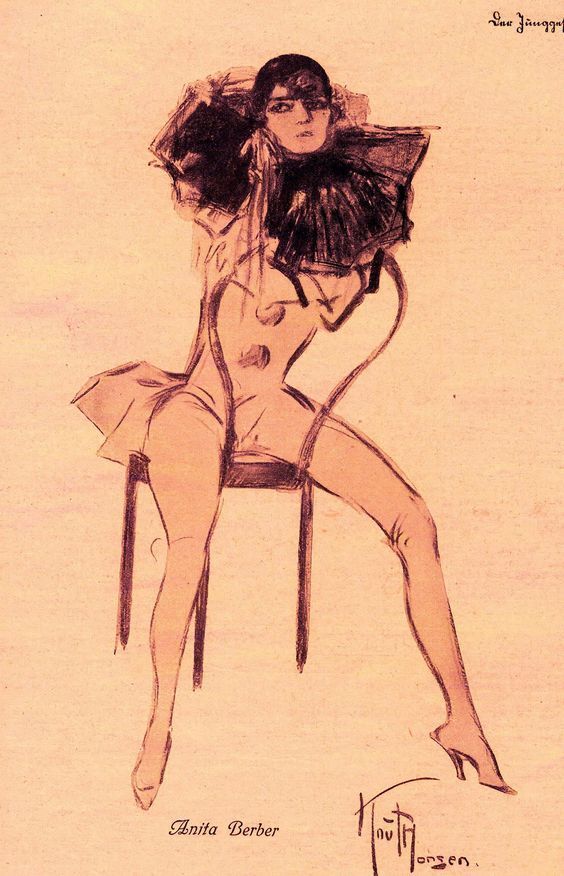
Anita Berber by Knut Hansen
7 notes
·
View notes